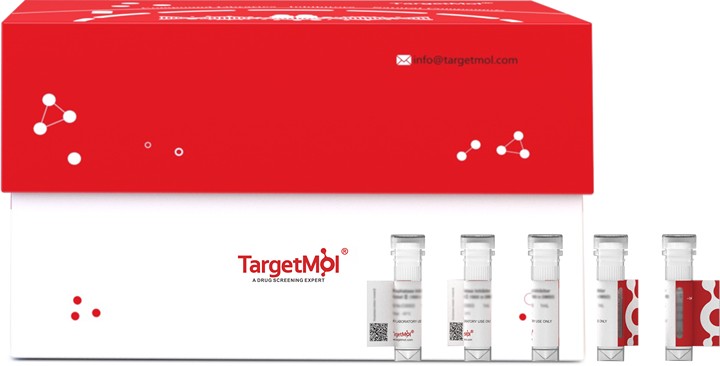
FGF-10 Protein, Human, Recombinant
TMPY-01061
Estimated PuritySDS-PAGE: 97.9%; SEC-HPLC: 98.9%
Product group Chemicals
Molecular Weight19.46 kDa (predicted); 19.46 kDa (reducing conditions)
Overview
- SupplierTargetMol Chemicals
- Product NameFGF-10 Protein, Human, Recombinant
- Delivery Days Customer16
- CertificationResearch Use Only
- Estimated PuritySDS-PAGE: 97.9%; SEC-HPLC: 98.9%
- Molecular Weight19.46 kDa (predicted); 19.46 kDa (reducing conditions)
- Scientific DescriptionFibroblast growth factor 10 (FGF10) is a member of the fibroblast growth factor (FGF) family. FGF family members possess broad mitogenic and cell survival activities, and are involved in a variety of biological processes, including embryonic development, cell growth, morphogenesis, tissue repair, tumor growth and invasion. FGF10 exhibits mitogenic activity for keratinizing epidermal cells, but essentially no activity for fibroblasts, which is similar to the biological activity of FGF7. FGF10 plays an important role in the regulation of embryonic development, cell proliferation and cell differentiation. FGF10 is required for normal branching morphogenesis. It may play a role in wound healing. Defects in FGF10 are the cause of autosomal dominant aplasia of lacrimal and salivary glands (ALSG). ALSG has variable expressivity, and affected individuals may have aplasia or hypoplasia of the lacrimal, parotid, submandibular and sublingual glands and absence of the lacrimal puncta. The disorder is characterized by irritable eyes, recurrent eye infections, epiphora (constant tearing) and xerostomia (dryness of the mouth), which increases the risk of dental erosion, dental caries, periodontal disease and oral infections.
- Storage Instruction-20°C
- UNSPSC12352200
